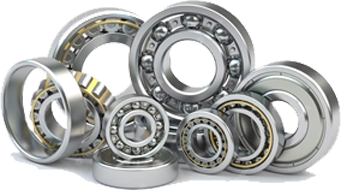Bearings are available in different shapes, sizes, and types which may be specific for different applications in varied industries. This blog covers some of the points which you should keep in mind before purchasing bearings for industries.
The bearings are high-precision components that power rotating assemblies in mechanical systems. Be it automobiles or aeronautics, it can be used everywhere in any size to accommodate acceleration and reduce friction between different parts or mechanical elements. The bearings are designed in such a way to make it work at high speed without generating much noise and vibration. Since varied industries might require bearings for different applications, you must consider a few things before purchasing them.
Things to Keep in Mind Before Purchasing Bearings for Industries
There can be various factors that might play a role in choosing the right kind of bearing depending upon your applications. Here are some of them to help you understand it right:
- Understanding Operating Conditions: The different applications might require different operating conditions which may vary in aspects such as loads, shaft requirements, the precision of radial positions, shaft strength requirements, etc. In such cases, it is recommended to determine which type of bearings are designed for such applications.
- Bearing Type and Arrangement: Bearing arrangements are a crucial factor to determine the support and location of shafts. It can be an axial or radial location where support may be required to position a shaft. For instance, bearing type and arrangement requirements can range as per location and non-locating bearing combinations where different types of bearings such as deep groove ball bearing or cylindrical roller bearings can be used. So, before planning the applications for bearings, it is crucial to understand which type of bearing and arrangement is required.
- Bearing Loads: It can be referred to as transferring of force from bearing to other rolling elements or bearing rings. The load generally can be axial, radial, or combined load. During the process of choosing a bearing for industrial application, it is crucial to first understand the type of the acting load and then plan which types of bearings might suit well in such an application.
- Considering Bearing Size: The bearing size should be adequate and precise in terms of its application. If bearing size is not considered in the right manner then it might result in rolling contact fatigue, breakdown, and deformation or might also decrease its service life.
- Lubrication Criteria While Selecting Bearing: It is also important to consider lubricating criteria while choosing the type of bearings. By referring to lubricant criteria, it suggests which type of lubricants such as oil or grease will be used in bearings.
- ISO Tolerance Classes: It signifies the tolerance capability of bearing under varied performing conditions. To understand it better, The ISO 492 Class 5 standard signifies the ability of a particular bearing to withstand tolerance limits while using it for high-performing or high-speed rotational applications.
- Bearing Internal Clearance: The bearing internal clearance defines how much a bearing ring can move relative to other rings in radial or axial directions. It signifies the operation of the bearing in a satisfactory manner without any constraints. This is also one of the key factors to consider while choosing bearings for industrial applications.
Conclusion
The bearings can be considered vital components of any machinery or mechanical system. While it allows in reducing friction between various components, it also enables machinery and its components to operate well without any challenges. Before purchasing bearings for industries, it is crucial that you should consider varied factors to ensure optimum performance and functioning. Hopefully, the insights and points mentioned in this blog will help you get the right bearings perfect for your use case.













